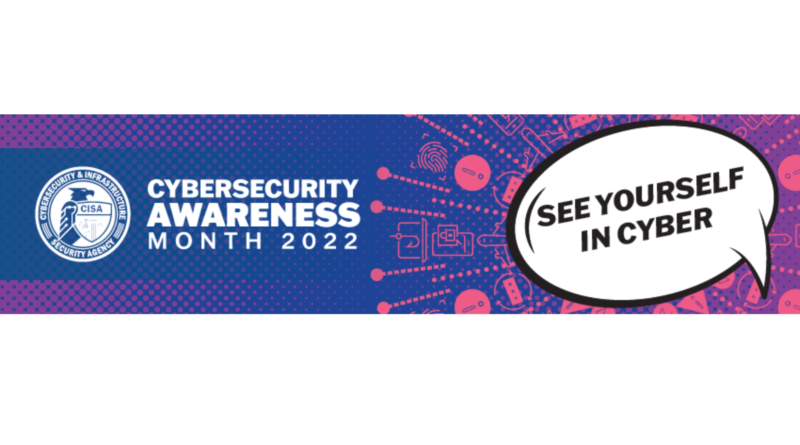October is Cybersecurity Awareness Month
See Yourself in Cyber
This year’s campaign theme – “See Yourself in Cyber” – demonstrates that while cybersecurity may seem like a complex subject, ultimately, it’s really about people. No matter what role you play – as an individual or consumer – take basic steps to protect your online information and privacy. You can do your part by reporting anything suspicious, implementing stronger security practices, and helping to raise awareness.
Four Things You Can Do
According to the Cybersecurity and Infrastructure Security Agency and the National Cybersecurity Alliance, some key action steps that everyone should take include:
- Enabling multi-factor authentication (MFA);
- Using strong passwords;
- Recognizing and reporting phishing; and
- Updating your software.
How Does MFA Work?
With MFA, users are required to provide both a password and at least one additional verification of their identity – such as a secure code on an approved mobile device or a biometric like a fingerprint – before they are granted access to networks or resources. This added step significantly increases the degree of difficulty for attackers and greatly reduces the likelihood that a compromised credential alone will be enough to launch an attack.
What Is Phishing?
Phishing happens when a cybercriminal poses as a legitimate party in hopes of getting individuals to engage with malicious content or links. It remains one of the most popular tactics among cybercriminals today, with 80 percent of cybersecurity incidents stemming from a phishing attempt.
Remember to #BeCyberSmart! Cybercriminals don’t just use technology to steal information – they also rely on human error and our natural tendency to share information about our lives.
How to Be Cybersmart
Always be on alert for phishing and social engineering attacks. Typos, poor graphics, and other suspicious characteristics can be a telltale sign that the content is potentially coming from a “phish.” Be wary of unusual sources, do not click on unknown links, and be sure to report suspicious messages.

To report a suspicious email, use the “Report suspicious email” menu item in Outlook or click on the “phish” toolbar icon.

Tips to Keep Your Workplace Safe and Secure
- Identify “crown jewels” of your work. Understanding the information that cybercriminals want is essential to combating cyberattacks: create an inventory list of the valuable data and assets within your organization, including manufacturer, model, hardware, and software information.
- Protect assets by updating and authenticating. At the end of the day, protecting your data and devices from malicious actors is what cybersecurity is all about. To accomplish this, make sure your security software is current. Investing in the most up-to-date software, web browsers, and operating systems is one of the best defenses against a host of viruses, malware, and other online threats.
NYC Secure App
For increased security you can download the NYC Secure App on your personal mobile devices by visiting https://secure.nyc/. NYC Secure is a free, New York City-funded mobile app that will alert you if your mobile device or tablet encounters threats such as a potentially unsecure Wi-Fi network and will offer recommendations on how to address the threats. The app was designed with your privacy in mind. No information about you leaves the device.







